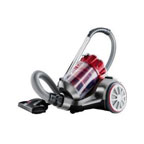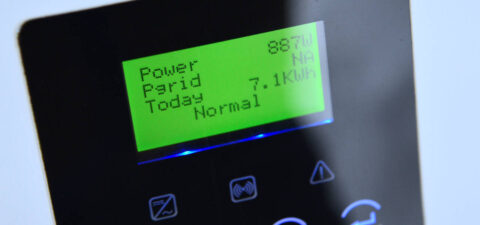It’s great to have some sunshine this spring after what seems to have been the dullest winter for years. Those lucky enough to have PV solar panels will be rejoicing that the longer days and bright sunshine are drastically increasing their energy generation.
The only problem is that this electricity is being generated when you least need it; as you may be at work, not using your appliances, lights, and heating during daylight hours.
Wouldn’t it be great if you could store this surplus energy from solar panels and then feed this back to your home in the evenings? Or even sell this electricity back to the grid.
Home solar battery storage solutions – Lithium or Lead Acid?
Solar electricity generation seldom coincides with demand, this is where home battery storage can make a real impact on your energy bills. Lots of home solar battery storage solutions have appeared in recent years. These tend to utilise Lithium battery technology, as they have longer lifecycles and are in smaller size than other battery options. This make lithium batteries easy to fit within your home or on an outside wall. Long warranties are the norm, ranging from five to ten years.

Lead acid battery systems are available too, they are lower in price, however their life expectancy it much lower than Lithium units. You would also need a much bigger space to accommodate the batteries footprint. Whilst lead acid systems are cheaper to install they are less efficient and won’t last for long, that said if you’ve the space in an outbuilding then they could be a good option. The other advantage is the recycling of Lead Acid batteries is a much more mature market – making the disposal of the used batteries much easier, unlike lithium products.
Choosing the right capacity for your home energy store
The capacity of any energy storage will be sized in kWh, the most useful figure is the ‘useable capacity’ not the total capacity. As batteries should never be drained completely – fully discharging will damage it! The power output is an important factor too, as boiling a kettle will draw about 2 kW (2000 watts) So having a 1kW battery pack would be insufficient and you would be using grid power every time you make a brew!
Bigger batteries aren’t often the best option, it all depends on the capacity of your PV system, as the UK winter months lack the energy from the sun. The more battery capacity you have installed the less energy you will buy, only until the point where you cannot charge or discharge it fully. A good installer should be able to work this out for you.
Life expectancy of energy storage systems
Batteries have an expected number of cycles, which is normally quoted in the warranty. A cycle normally means a full charging cycle of its ‘useable capacity’ meaning if you use half the batteries capacity one day, then charge fully, then do the same again the following day, that would be one full cycle.
The price you’ll pay per kWh will be based upon the calculation of the capacity of your battery and its expected cycles. The life of storage will be dictated by the sophistication of the software and hardware management of the charging process. It’s worth noting that quality battery storage systems are likely to work past their warranty.
Anyone who drives an electric car will tell you that the range of EV’s is much less in winter, as batteries aren’t as efficient in cold weather. This would have a detrimental effect if your energy store was located in an unheated building.
What happens when you have a power cut?
Unfortunately, most systems are designed just for energy storage, not as back-up capacity for your home. For safety reasons most storage system would not keep your lights on in the event of a power cut. Solar PV panels systems work in the same way, cutting energy output when grid input stops. Sending electricity back to grid, when engineers maybe working on the lines to repair a fault, isn’t a good idea!
Off-grid larger storage capacity batteries are available; however, this would involve a major rewire of your home.
Selling stored surplus electricity back to the grid

Balancing the electricity grid is a constant headache, especially with intermittent renewable energy generation. This may result in surpluses when there’s plenty of electricity on a windy sunny day in April, potentially driving down spot market prices. Then the price could increase when the wind drops and demand kicks in when we’re back home cooking and heating our homes in the evening.
Is an electric car right for you?
Smart linked mass battery storage systems and bi-directional vehicle-to-grid chargers (using electric car batteries) are being seen as a potential solution to smoothing out demand. When demand is high, you sell back surplus stored energy back to the grid at a premium – hopefully in the future it will be a seamless process handled by your energy provider, or even by blockchain trading platforms. This could mitigate the need for fossil fuel driven backup generation – some of which are diesel – that kick-in when demand outstrips supply. Currently energy producers are paid to have backup generation waiting in-case of power outages or sudden increases in demand.
Ovo Energy, working alongside Innovate UK, are piloting a system that enables electric car owners to sell surplus energy from their EV’s batteries back to the electricity grid. Their vehicle-to-grid charger, will enable electric vehicles to be charged during off-peak hours when cheaper off-peak electricity is plentiful – easing pressure on the electricity grid. This smart platform could be highly scalable, allowing them to create virtual power plants which react as a whole to changes in demand and supply. Using this approach could facilitate more renewable energy generation and supply without the need for costly infrastructure investment.
At the moment the two-year pilot is only open to 1000 Nissan LEAF / e-NV200 drivers and shouldn’t have any adverse effect on the vehicles battery life. The software allows you to override any grid draw from your vehicles batteries. This would be must if you’re be planning a journey that requires the full battery range.
Electric vehicles running costs
Another OVO innovation is a home energy storage and communications unit that will dynamically and proactively manage energy and power use. It will enable their customers to store, use and sell back electricity to the grid, whether or not they produce it themselves. Unfortunately, this product isn’t available to consumers who already have Solar PV, or micro wind generation – hopefully this will change.
Energy storage – do the numbers stack-up?
This is tricky, currently (no pun intended!), there isn’t a mechanism for selling homeowner stored electricity back to the grid. And with electricity storage systems ranging in price from £3500 to over £8500, you’d have to save a lot of imported grid energy to payback the capital outlay.
If you’ve a 4kW solar PV you’d only be storing the electricity that you don’t use during the day, then using this in the evening. Okay that maybe quite a few kWh’s on a sunny day in June, not so brilliant in December – when your energy needs are there greatest.
If the vehicle-to-grid initiative works, and there are changes in the way the market treats domestic energy storage, home battery storage systems could become mainstream, and make environmental and economic sense.
The future is nearly here!
See the most energy efficient...
← SWIPE →
Please note: We do not publish sponsored content or guest posts that are trying to promote specific products or brands. If you have a genuine newsworthy story you would like to share please do comment or email.














































